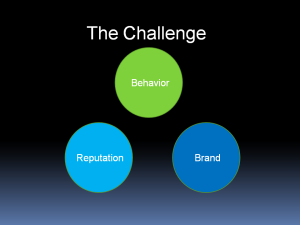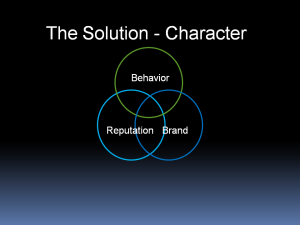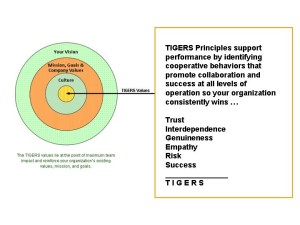
The first step to improving a toxic environment is to first identify that one exists. Some signs include:
The boss is always right. Leaders need to manage their teams, but when they cross the line into micromanaging, the working environment can take a toxic turn. Leaders set the tone for how all team members interact, and when leaders become micromanagers, the team feels that they are not trusted. When it’s the boss’ way or the highway, a lot of team members may choose to take the highway, leading to higher turnover rates.
Whispers abound. Secrets and gossip are ingredients for disaster in the workplace. When team members walk into a room and are met with sudden silence, or when team members are constantly huddled up and whispering, all team members will start to feel uncomfortable. Secrets can also come in the form of non-transparent environments, where leaders never share important information with their team members or clients, which will lead to misunderstandings, missed goals and unclear purposes. These behaviors damage trust, interdependence, genuineness, empathy, risk and success; six principles required for supporting cooperation among employees and collaboration between departments.
High turnover rates. In toxic environments, high turnover rates are not only the norm they are expected. Leaders in toxic environments may not recognize that the workplace is toxic, but they will notice that they are constantly hiring new employees, as the existing employees are regularly fired or they quit. In this type of environment, leaders may not bother to learn their employees’ names, and team members do not have much confidence in them. The same goes for leadership teams. When leadership turnover is high, team members are left with little confidence for the future of their organization and may start to look for opportunities elsewhere.
Greed abounds. Greed is one major contributing factor to a toxic workplace. Greed abounds when team members are more concerned with their own successes over their team’s successes and leaders are more concerned with the bottom line over the well-being of their employees. Wages and benefits are low, morale is low and product quality is low when greed is the motivating factor.
These are just a few examples of the symptoms in a toxic environment, and if your workplace is exhibiting some or all of these signs, hope is not lost. After identifying a toxic environment, here are a few team building tips and strategies to deal with problem employees and improve employee morale.
 Team building tips for identifying and improving a toxic environment
Team building tips for identifying and improving a toxic environment
Investigate. If you as a leader suspect that the workplace is toxic, start an investigation. Use a reliable workforce behavior survey that identifies key concerns. Then sit down one-on-one with your employees and seek to understand their thoughts and concerns with the environment. Be mindful, however, that your employees might be reluctant to share their insights until trust is rebuilt. After gaining an understanding of how your team members feel, draft policies and engage employees to implement strategies to address the behavior.
Address the behavior. One way to ensure toxic behaviors continue is by pretending that they are not present. Leaders and other team members need to confront toxic team members and deal with the issues head on. Leaders or team members should calmly explain their feelings to the toxic team members and give them a chance to change their behavior. If no changes occur, leaders may need to make the difficult decision to let these team members go.
Get help. Sometimes leaders need an outside perspective. With a team behavior assessment from the TIGERS Success Series, leaders will be able to gather strategic information that measures the trust, interdependence, genuineness, empathy, risk and success within their team’s culture. Individualized strategies help leaders understand how they can make sustainable changes within the workplace, and multiple surveys allow leaders to track their team’s progress.
A toxic work environment is not something that should be ignored, but it’s not unmanageable either. Leaders may be able to recognize a toxic workplace by the managers’ attitudes, abounding secrets and gossip, high turnover rates or greed, but there are several strategies that they can implement to turn the environment around. By investigating the cause, addressing the behavior and hiring outside help, leaders can change a toxic environment into a successful and productive workplace.
 Some well-written articles we thought add to this topic include:
Some well-written articles we thought add to this topic include:
- Six Signs Your Company’s Culture Is Toxic
- How Frequent Turnover in Top Leadership Can Turn an Organization Toxic
- Is Your Workplace Tough — or Is It Toxic?
- Here’s How You Should Deal With Toxic Teammates
- What to Do When Your Workplace is Toxic
Copyright TIGERS Success Series, Inc. by Dianne Crampton
 About TIGERS Success Series, Inc.
About TIGERS Success Series, Inc.
TIGERS Success Series, Inc. is a proprietary team development model based on six principles required for high levels of cooperation among employees and collaboration between departments. The six principles are trust, interdependence, genuineness, empathy, risk and success. These principles are anchored by behaviors that measurably improve team behavior and support existing corporate values.
TIGERS is a Bend, Oregon Team Development Consultant that also licenses and trains HR Executives in TIGERS Team development and Facilitation methods. As a result, HRD leaders are able to build high levels of cooperation to compliment growth and workforce development strategies in measurable ways.
TIGERS is research based and validated with over 30 years of experience building and improving teams and collaborative work culture to drive improved business revenue. This is the type of work culture employees enjoy returning to after a couple of days off. Call 541-385-7465 to inquire.


